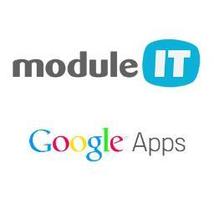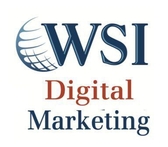|
Make the best of your Website carousel. Most people like to see images on a slider on a website, they are a fairly well established design element. However, there are some dos and don’ts to bear in mind:- Get the auto rotate right: 1. Don’t make them whizz by too fast, give the user a chance to linger on the nice images, maybe even read a heading. 2. Prioritise the order of your slides, the first will always be most important, the fourth may not get seen by a lot of users. 3. Pause on mouse hover, give the user the chance to click on any links and disable autorotate on mobile. 4. If the user clicks on the play controls, stop the auto rotate - they may just be trying to look at something. 5. Add swipe as well as arrows to control the slider on mobile, users like that on touch screens. There are more things you can do too - check out the full list on our website. http://ilateralweb.co.uk/web-design-news/you-spin-me-right-round-a-guide-to-carousels-on-home-pages/
0 Comments
What are the chances?!
1) You've just bought a new house and the 70's avocado bathroom suite has to go. 2) After some bad weather, the fence between your neighbours has broken and their little doggy is leaving some presents on your lawn. 3) Your little darling has given your beautiful lounge walls a little update. What do you do? You might look in the local paper, grab a business directory out of the drawer, Google local services, jump onto social media and search for a local business, ask on social media if anyone knows anyone, or ring friends and family for suggestions. So...... now, you are that local business they need, using the options above, how can they find your number and not your competitors? Everyone works differently, some use only one of these methods, some a mixture, some all - how many can you be found by? If it's only 1 of them, you have a 1 in 6 chance they will use the option that finds you, but wait.......there's many other people who also do what you do and they also market themselves in the same place. What's the chance that you will get the call? Probably one in maybe even hundreds at times. Have a think about your business and whether you are in enough places. Brand awareness is a massive part of your business plan and must not be overlooked. If you'd like more information on brand awareness and how to expose your business, contact Jo of Forest Traders for more details. In sales, a Dancing Pony is the sales person who gives all of the information on the first call or visit. This is then perceived by the customer as open information to be used to get the best deal from the competition.
Sales people are warned continually that this is bad practice and they should hold back as much as possible until they get commitment. The buyers though are continually told to try and get all of the information early and under no circumstances to give a commitment. In my humble opinion, this all leads to a competitive culture where each is trying to outwit the other to get the 'best deal'. This invariably leads to 'buyers remorse' which means that you feel inclined never to buy from that person again and the supplier resents giving any further help. Clearly in the case of a service such as IT support or telephony which is all about the relationship this will never work. As more and more 'open source' products are being given away free to start with, thanks largely to Google. There seems to be a new culture building in which the expectation is that you try stuff out first and become 'expert' in its use then go to market to get the best deal. This devalues the role of the expert advisor and potentially can waste a lot of our time. This in turn could damage our ability to do business. So what can we do? I for one want to have happy customers that feel encouraged to recommend my services, so I'd rather cut out the competition and go straight for the relationship. Since that is going to be based fundamentally on my ability to provide the service, I'm going to give all that I can of my time and expertise free of charge and if prospective customers go elsewhere then good luck to them. With this in mind, feel free to ask me for a quotation or help any time. Bring on the Dancing Ponies! ;) What To Do If Your Website Is Not Bringing In Sales
Getting enquiries and making sales are pretty much the two things that most business owners need to get right if they want to stay in business, as without the enquiry, there is no sale, which means that the more enquiries a business can get, then the more sales they can hope to close. The primary reason any business owner has a website is to increase business, else we would all just have one for vanity reasons, but just having a website does not necessarily mean that it is going to get you success. If you have a website and you are just fed up of it not working, then instead of giving up on it, you need to take a step back and work out why, taking an often required unbiased view and being critical about its performance and the lack of enquiries you are getting. It is very easy to get proud with websites and try to paint a rosy picture, but unless you are true to yourself, then you are never going to get anywhere. Criticism of your pride and joy can be hard to take, but if the criticism leads to changes that get you more business, it is time to take it on the chin and get some honest feedback. The first thing to do is check your traffic levels. There are many free website statistic tools online, but the one I would always recommend is Google Analytics. Having a website is one thing but getting people to use it is another, so it’s important that before you start ripping your design to shreds, you make sure that the lack of enquiries is not down to no visitors. You need people on your site to make sales, so if they are not coming, then there is your problem and you can start to take steps to address it. From SEO through to Pay Per Click, there is a huge amount of ways to get traffic and visitors, all of which most firms should be considering implementing anyway. If the traffic is not the issue, then you need to take a step back and really look at the site in depth. Although there are many things to look at, some to really focus on are: · Lack Of Conversion Points – Make sure that your contact details are on the bottom of every page and that your phone number is always in top right of the website, because no matter where the visitor is on your site, you need to make sure that it is easy for them to contact you the moment they decide they want to make an enquiry. · Over Complication – If your website is too complicated, fussy and it is just not easy to find things, then this is going to be a major issue for your visitors. Make sure the site is easy to use, easy to find the information they need and easy to contact you, which doesn’t mean the design has to be boring, it just means it has to be useable. · Mobile Compliant – One area still overlooked is websites on smart devices and tablets, which means that if your website does not work on mobiles or tablets and a lot of your traffic is coming from these areas, then you need to sort it by getting a responsive website that will work, so that these people can actually use your site. · Poor Navigation – You literally have seconds when it comes to website visitors making their mind up about you and your business, so it is vital that you make sure that when they enter your site, they can get what they need quickly. A decent top menu that is easy to understand makes a big difference, with easy to follow navigation structures throughout your site. · First Impressions – There is nothing wrong with minimal content on your site, but it is still important that the content you do have sells you and your business, else you are not going to hook the visitor into making an enquiry. Your website is an impression of you and your business, so if it looks cheap and badly run, people will assume this is how you run your business. Effort and time are both needed to make a good website, especially if you want your site to start working for you. Websites require a lot of work if you want them to start performing and earning you money. The more content you write and the more blogs you produce, the higher you will rise in the search engines ( as long as the website is well optimised ). To be honest, if you have a website and never bother to add anything to it, then you cannot expect or demand success, as this should be considered a crucial part of your marketing strategy and you have to work it, and work it hard. So, if your website is not bringing in the money, instead of giving up and moving on to something else, do some research and take a stand backwards to evaluate what you are offering and if it can be improved. I say this because any website you ever see has room from improvement, and with a bit more effort and unbiased views, you can make your site work for you, that is 100% guaranteed! Google goes further to the dark side?
SEO for Dummies Anyone wanting to SEO their site 2 years ago, knew that the two key things they needed to do was to build links from other sites to their site and to identify the keywords that searchers found their site with. For the latter Google provided within their free Analytics tool a free and easy way to check how effective they were. The Penguin algorithm change in April 24th 2012 link-building was dealt a grievous blow to hit all those who had bought spurious and thin links from stray unrelated sites. Penguin focuses on the quality and relevance of those links. This year Google has removed the easy accessibility of keywords in Analytics so that site owners could see how they were found organically. For any users of Analytics go to Acquisition, then Keywords then Organic. If 80%+ are coming up as unknown then you are already hit. What you might try is to extend the data range to the full year and then download the keywords shown. For some users this allows them to save some of the key words, which are now dark. But for most it doesn’t. Why have Google done this? Well because they can. They own the rules of the game and can change what they want in order to achieve their aim. Their aim is to put in front of the searcher the most relevant page from Google’s databases of pages which they believe, from Google’s understanding of the words entered, is most likely to answer it. Key words and key word phrases have, as the number of web pages increased, also increased in order to be the most relevant page. Keywords will still be used in Adwords and pay per click advertising to trigger adverts and Google will still use and make available data to those purchasing adverts. Is this wrong? No because with everyone focusing on keywords as the way to optimise and then using Analytics to measure, the game has been corrupted. So no it’s not a breach of a tacit contract whereby Google gained the data on keywords via sites using Analytics and in return we got a free tool. What can I do? After gnashing your teeth at the loss of an easy to use tool, move on. · There are a range of tools which measure the competitiveness of your pages on your defined search terms. Most have a limited free service, which may be more limited as they now need to pay more for Google data. · If you use Analytics to see entry pages, you will have a good idea of the types of topics that interested your viewer. It is this focus on topics which has become more important. Google has just made it harder to cheat. · Don’t continue to look for quick fixes as these are likely to break the rules or cause the rules to be changed as too many people pile in. The discipline of writing content around keyword phrases still applies. All that has been lost is the easy way to measure it. |
Categories
All
CAP BUSINESS CLUBS BLOG
Archives
December 2018
Visit us on Facebook - We always appreciate any "Likes"
Contact us
T: 01594 723120 M: 07811 981929 Email: Here Office 3 The Main Place Old Station Way Coleford, Glos GL16 8RH |











 RSS Feed
RSS Feed


